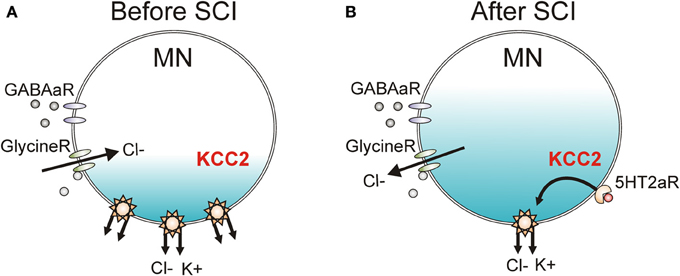
94% of researchers rate our articles as excellent or good
Learn more about the work of our research integrity team to safeguard the quality of each article we publish.
Find out more
GENERAL COMMENTARY article
Front. Integr. Neurosci., 16 June 2014
Volume 8 - 2014 | https://doi.org/10.3389/fnint.2014.00049
This article is part of the Research TopicMechanisms of Motor Function Recovery after Spinal Cord InjuryView all 12 articles
This article is a commentary on:
Recovery of neuronal and network excitability after spinal cord injury and implications for spasticity
 Jessica M. D'Amico1,2
Jessica M. D'Amico1,2 Elizabeth G. Condliffe1,2,3,4
Elizabeth G. Condliffe1,2,3,4 Karen J. B. Martins1,5
Karen J. B. Martins1,5 David J. Bennett1,6
David J. Bennett1,6 Monica A. Gorassini1,2,3*
Monica A. Gorassini1,2,3*A corrigendum on
Recovery of neuronal and network excitability after spinal cord injury and implications for spasticity
by D'Amico, J. M., Condliffe, E. G., Martins, K. J. B., Bennett, D. J., and Gorassini, M. A. (2014). Front. Integr. Neurosci. 8:36. doi: 10.3389/fnint.2014.00036
In Figure 10 of D'Amico et al. (2014) the KCC2 co-transporter was incorrectly drawn as a co-exchanger. This has been corrected in this version of the figure to show that both chloride and potassium are pumped out of the motoneuron.

Figure 10. KCC2 cotransporter and chloride equilibrium before and after SCI. (A) A potassium chloride cotransporter (KCC2) transports both chloride (Cl−) and potassium (K+) out of the motoneuron (MN) to maintain Cl− equilibrium potential below resting membrane potential, allowing Cl− influx and MN hyperpolarization during activation of GABA and Glycine receptors (R). (B) Downregulation of KCC2 expression in motoneurons after SCI increases intracellular Cl− concentration, depolarizing Cl− equilibrium potential to above rest. This produces efflux of Cl− and depolarization of MN during activation of GABA and Glycine receptors. Activation of 5-HT2A receptors increases cell membrane expression of KCC2 after SCI to restore endogenous inhibition.
The author declares that the research was conducted in the absence of any commercial or financial relationships that could be construed as a potential conflict of interest.
Keywords: spasticity, motoneurons, spinal cord injury, rehabilitation, reflex
Citation: D'Amico JM, Condliffe EG, Martins KJB, Bennett DJ and Gorassini MA (2014) Corrigendum: Recovery of neuronal and network excitability after spinal cord injury and implications for spasticity. Front. Integr. Neurosci. 8:49. doi: 10.3389/fnint.2014.00049
Received: 22 May 2014; Accepted: 26 May 2014;
Published online: 16 June 2014.
Edited by:
Martin Oudega, University of Pittsburgh, USAReviewed by:
Robert M. Brownstone, Dalhousie University, CanadaCopyright © 2014 D'Amico, Condliffe, Martins, Bennett and Gorassini. This is an open-access article distributed under the terms of the Creative Commons Attribution License (CC BY). The use, distribution or reproduction in other forums is permitted, provided the original author(s) or licensor are credited and that the original publication in this journal is cited, in accordance with accepted academic practice. No use, distribution or reproduction is permitted which does not comply with these terms.
*Correspondence:bW9uaWNhLmdvcmFzc2luaUB1YWxiZXJ0YS5jYQ==
Disclaimer: All claims expressed in this article are solely those of the authors and do not necessarily represent those of their affiliated organizations, or those of the publisher, the editors and the reviewers. Any product that may be evaluated in this article or claim that may be made by its manufacturer is not guaranteed or endorsed by the publisher.
Research integrity at Frontiers

Learn more about the work of our research integrity team to safeguard the quality of each article we publish.